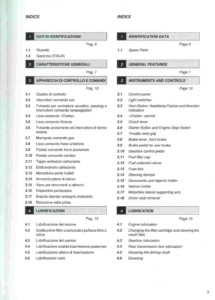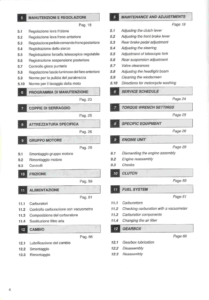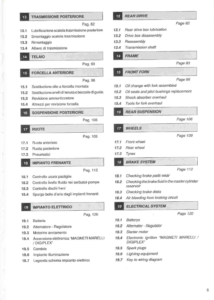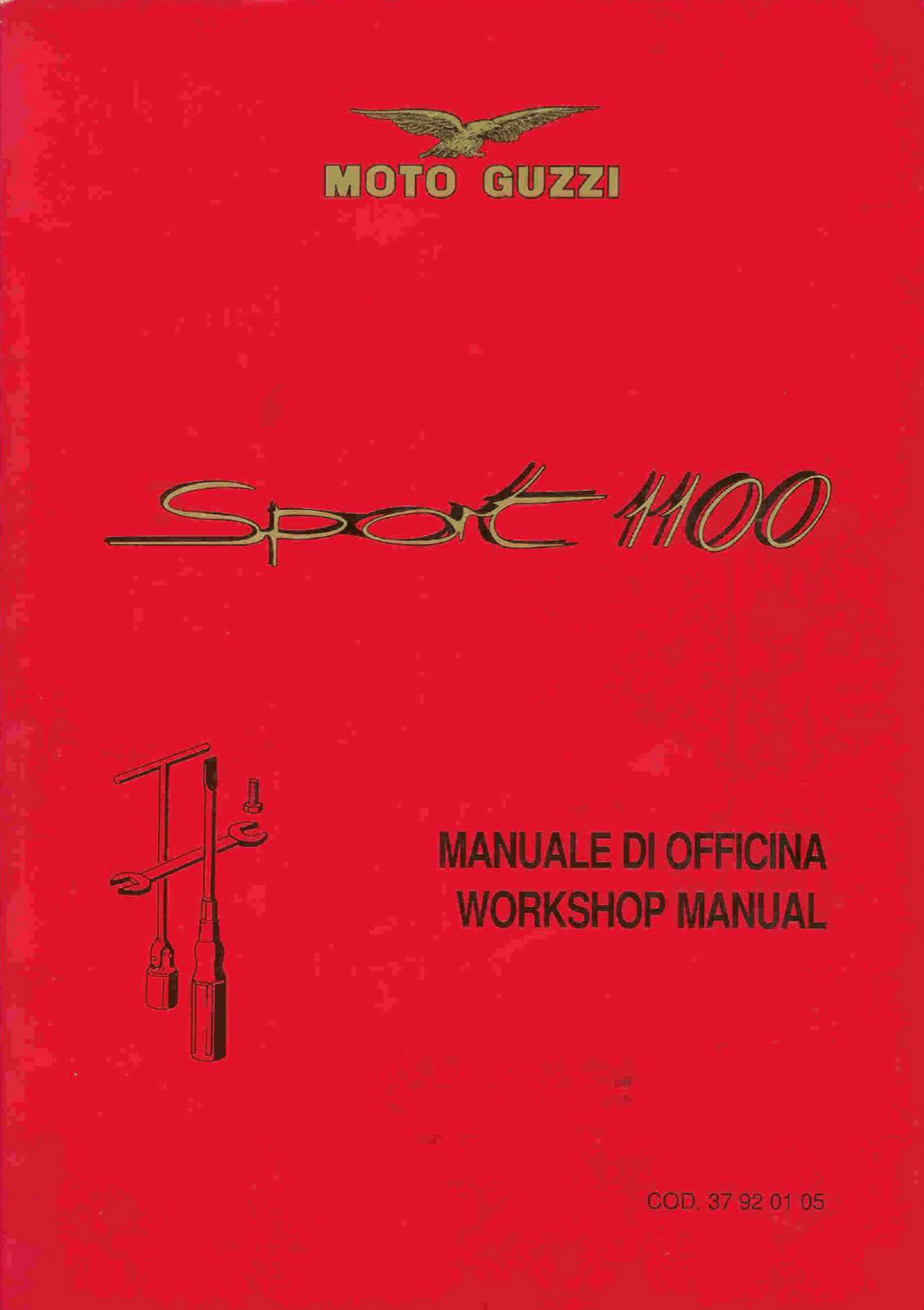Complete PDF version of the Service Manual for the Moto Guzzi Sport 1100. A MUST for every Sport 1100 owner.
Download: Immediately after payment!
OEM Original factory workshop manual.
Models covered by this manual: 1994 to 2000
Number of pages: 133 pages
Table of contents:



This PDF repair manual can be downloaded right after the payment process in complete, on the device of your choice.
We do not offer printed manuals, for the following reasons:
- it is more eco-friendly to use a digital version
- your manual never gets dirty or greasy
- you can always choose to print the specific page(s) you need to work on your bike
- you receive your manual immediately after payment
- it is searchable
Moto Guzzi Sport 1100
Moto Guzzi 1100 Sport was a motorbike manufactured by Moto Guzzi between 1994 and 2000.
The 1100 Sport was Moto Guzzi’s second sports bike idea, with more basic characteristics than the Daytona from which it descended. The distinction between the two models, however, was not as clear, and it was not even physically possible, so the two models ended up cannibalizing one other, preventing either of them from breaking through.
Unlike the Daytona, the 1100 Sport was also equipped with the most recent iteration of the V2 engine, which was increased from 992 cm3 to 1064 cm3. The frame created and built by John Wittner (also known as Dr. John, a dentist of American nationality) for the Daytona was also taken by the 1100 Sport, a single beam with a falling rectangular section that connected the steering head directly to the rear swingarm. The initial version was powered by two Dell’Orto 40 mm Weber – Marelli carburetors with 45 mm throttle bodies. Despite variable compression ratios, both models had roughly 90 HP (a more intense 10.5: 1 for the carburetor version, a quieter 9.5: 1 for the injection version).
The performance of this model was hampered by archaic tires (with 17″ wheels at the front and 18″ rims at the back), despite a legal frame and an engine not overdone in terms of maximum power but with good torque from low speeds (typical of the Moto Guzzi V2). The fast improvement of tires during those years (particularly the drive wheel) made very broad tires accessible, capable of transmitting much more power to the ground. The swingarm arrangement with floating cardan joint, but more importantly the limited economic resources available, prevented the rear end from being altered to accommodate this type of tire, restricting the performance of the 1100 Sport.
The initial version had a Marzocchi 41.7 mm White Power upside-down shock absorber and a fully adjustable mono shock absorber, both of which were White Power. The braking system was the classic Brembo, with 4-piston calipers, a twin disc up front and a single disc down back.
There were other differences between the two versions:
- The initial version did not have an oil radiator.
- The wheel rims are as follows: the first has three split spokes, the second has three single spokes (Marchesini in aluminum), and the rear wheel is 18′ on the first and 17′ on the second.
- The frame’s side plates: drilled in accordance with the frame in the first version and solid in the second, with the addition of a label with the Mandello eagle Steering plates and front fender, essentially to adapt them to the various forks already described.
- The design of the 1100 Sport text on the tail: italics on the first version, block letters on the second, with the term 1100 contained in an oval
Source: Wikipedia


